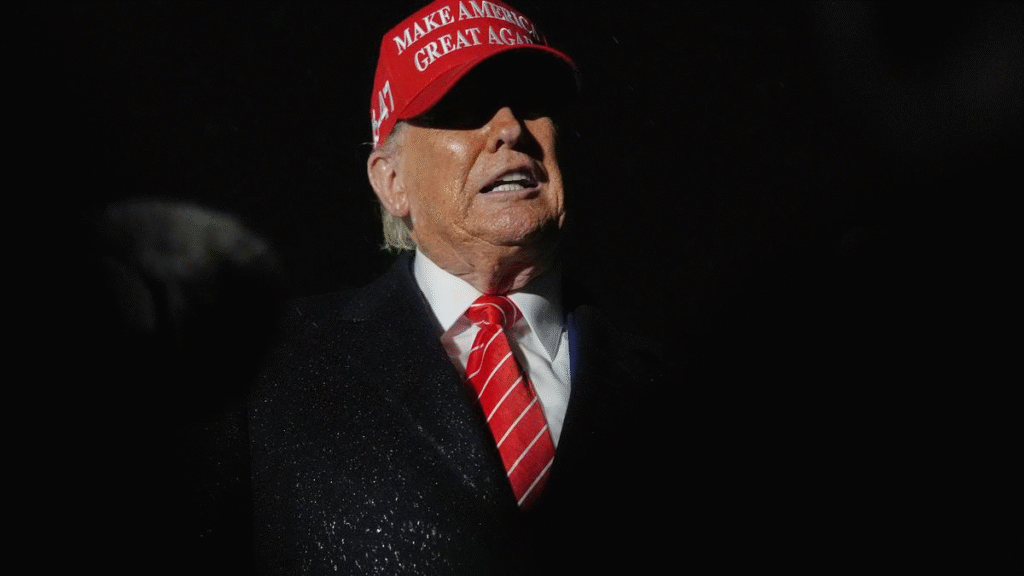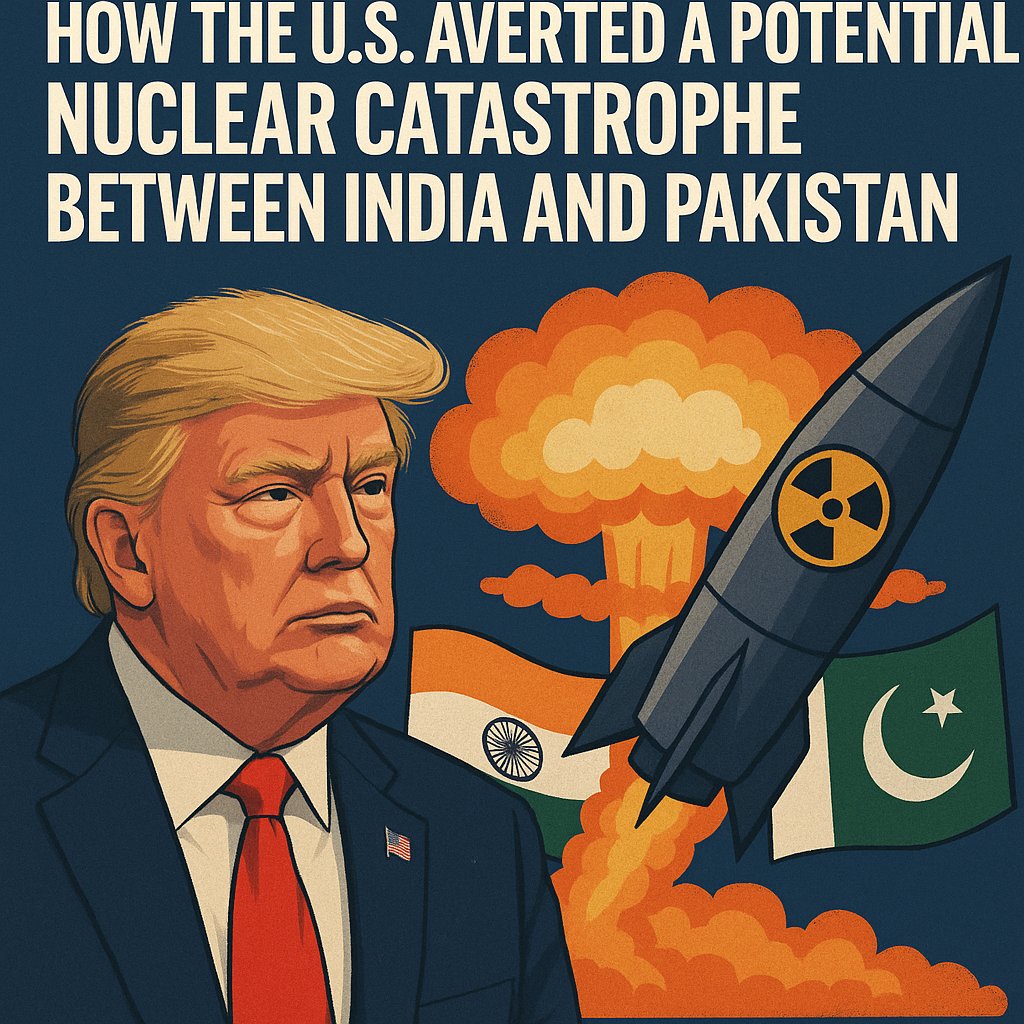
Former U.S. President Donald Trump has once again stepped into the spotlight, asserting that his administration’s diplomacy played a decisive role in de-escalating tensions between India and Pakistan during a precarious period in their history. Trump’s remarks, delivered at a recent political rally, highlighted his direct intervention in what he claims could have been a “nuclear disaster,” emphasizing the pivotal role the United States played in restoring stability to the region.
A Crisis Unfolds: The India-Pakistan Brinkmanship
The Indo-Pakistani relationship, marked by decades of political strife and territorial disputes, reached a boiling point in early 2019. The aftermath of the Pulwama terror attack, which claimed the lives of 40 Indian paramilitary personnel, saw an immediate and aggressive response from India. In retaliation, Indian fighter jets crossed into Pakistani territory, targeting what New Delhi identified as terrorist camps in Balakot. The strike was unprecedented, triggering fears of a full-scale military conflict between the nuclear-armed neighbors.
Pakistan’s subsequent downing of an Indian fighter jet and the capture of its pilot added fuel to the fire. The situation seemed to be spiraling out of control, with both nations engaging in aggressive rhetoric and military posturing. It was at this critical juncture, according to Trump, that the U.S. intervened to prevent a catastrophic escalation.
Trump’s Role in Diplomacy
Addressing his role in defusing the crisis, Trump claimed that he directly reached out to leaders in both India and Pakistan, urging restraint and advocating for a ceasefire. “I had to step in because the stakes were too high,” Trump stated. “When you’re talking about two countries with nuclear weapons, you’re talking about a disaster that could affect the entire world.”
While specifics of the conversations remain undisclosed, Trump’s approach reportedly included a combination of personal persuasion and leveraging the U.S.’s influence as a global power. He recounted asking both Prime Minister Narendra Modi of India and then-Prime Minister Imran Khan of Pakistan to consider the devastating consequences of a potential nuclear exchange, emphasizing the importance of dialogue over destruction.
Behind the Scenes of U.S. Intervention
According to sources familiar with the situation, U.S. diplomats worked tirelessly behind the scenes to broker a truce. The State Department, in coordination with Trump’s national security team, engaged in shuttle diplomacy, relaying messages between New Delhi and Islamabad. The emphasis was on de-escalating military actions and fostering direct communication between the two countries.
Trump’s efforts culminated in the eventual release of the captured Indian pilot, Wing Commander Abhinandan Varthaman, by Pakistan. This gesture, widely hailed as a step towards de-escalation, was seen as a direct outcome of international pressure, including that from the United States. In the weeks that followed, both nations took measures to avoid further provocations, though tensions remained palpable.
The Nuclear Question: Averted but Unresolved
The specter of nuclear conflict between India and Pakistan is not new. Both nations, armed with significant nuclear arsenals, have long viewed each other through a lens of deep-seated mistrust. The Kargil War of 1999 and subsequent skirmishes over Kashmir have repeatedly underscored the volatility of their relationship.
Trump’s claim of averting a “nuclear disaster” draws attention to the gravity of the 2019 crisis. Experts in international relations acknowledge that while the immediate threat was contained, the underlying issues that fuel Indo-Pakistani tensions—territorial disputes, cross-border terrorism, and political rivalries—remain unresolved. The incident serves as a stark reminder of the fragile peace in South Asia and the ever-present risk of escalation.
Trump’s Leadership in Retrospect
As Trump reflects on his tenure, the 2019 India-Pakistan crisis stands out as a defining moment in his foreign policy narrative. His ability to engage directly with global leaders, coupled with his willingness to intervene in high-stakes scenarios, underscores his approach to international diplomacy. Critics, however, argue that his actions were driven more by self-interest than altruism, pointing to his penchant for dramatic declarations and a focus on personal legacy.
Supporters counter this narrative by highlighting the tangible outcomes of Trump’s involvement. The de-escalation of the India-Pakistan crisis, they argue, is evidence of effective leadership and a pragmatic approach to conflict resolution. “Whatever his motivations, the fact remains that Trump’s intervention helped prevent a disaster,” said Michael Farrow, a political analyst specializing in South Asian affairs.
The Regional Implications of U.S. Involvement
The United States’ role in mediating the 2019 crisis has far-reaching implications for its relationship with South Asia. Historically, Washington has maintained strategic partnerships with both India and Pakistan, balancing its interests in the region. However, the evolving geopolitical landscape—marked by India’s growing alignment with the U.S. against China and Pakistan’s deepening ties with Beijing—has added complexity to these relationships.
Trump’s intervention reinforced the perception of the U.S. as a key player in South Asian security dynamics. For India, the crisis highlighted the importance of U.S. support in countering cross-border terrorism. For Pakistan, it underscored the need to engage with international stakeholders to manage its regional disputes. The incident also served as a reminder of the global stakes involved in South Asian stability, with major powers like China and Russia closely monitoring developments.
A Legacy of High-Stakes Diplomacy
Trump’s handling of the 2019 crisis is emblematic of his broader approach to international relations. Whether it was engaging North Korea’s Kim Jong-un, renegotiating trade deals, or addressing Middle Eastern conflicts, Trump consistently positioned himself as a dealmaker capable of tackling complex issues. While his methods often drew criticism for their unpredictability, they also yielded results that cannot be easily dismissed.
The India-Pakistan episode adds to this legacy, illustrating the high stakes and significant challenges of global diplomacy. It also highlights the critical role of leadership in navigating moments of crisis. As the world continues to grapple with geopolitical tensions and the threat of nuclear proliferation, Trump’s intervention serves as a case study in the importance of timely and decisive action.
Looking Ahead: The Road to Peace
The 2019 crisis between India and Pakistan may have been averted, but the path to lasting peace remains fraught with challenges. The core issues—Kashmir, terrorism, and political mistrust—persist, demanding sustained efforts from both nations and the international community.
Deepening the Context: The Role of International Institutions
The United Nations and other international organizations have long played roles in mediating disputes between India and Pakistan. However, their efforts have often been hindered by political impasses and regional complexities. Trump’s unilateral approach to mediation in 2019 bypassed traditional frameworks, drawing both praise and criticism. This approach raises questions about the efficacy of established diplomatic institutions in resolving modern conflicts.
Exploring Long-Term Solutions
For lasting peace, experts emphasize the need for structured dialogue and confidence-building measures between India and Pakistan. Track-II diplomacy, involving non-official actors like academics, retired officials, and civil society representatives, could supplement formal talks. Additionally, economic cooperation and shared development projects could serve as neutral grounds for fostering trust.
Public Sentiment and Political Will
Public opinion in both nations remains deeply polarized. Nationalist rhetoric often fuels hostility, complicating efforts at reconciliation. Leadership on both sides must work towards reframing narratives, emphasizing shared interests over historical grievances. Building political will for peace requires not just international pressure but also grassroots movements advocating for stability and cooperation.
The Broader Implications of Nuclear Deterrence
The 2019 crisis underscored the paradox of nuclear deterrence. While the presence of nuclear weapons ostensibly prevents large-scale wars, the risk of miscalculation or accidental escalation remains a significant threat. Strengthening communication channels, such as hotlines between military and political leaders, is crucial to reducing this risk.
Conclusion: A Moment of Reflection
As Donald Trump revisits his role in the 2019 India-Pakistan crisis, his narrative offers a moment of reflection on the complexities of international diplomacy. The story of how the U.S. helped defuse a potential nuclear confrontation serves as a reminder of the stakes involved in global leadership. It also highlights the enduring importance of dialogue, collaboration, and the pursuit of common ground in addressing the challenges of our time.
While history will ultimately judge the impact of Trump’s actions, the events of 2019 stand as a testament to the power of diplomacy in averting disaster and shaping a more secure future. The lessons of this episode will continue to resonate as nations strive for peace in an increasingly interconnected world.

